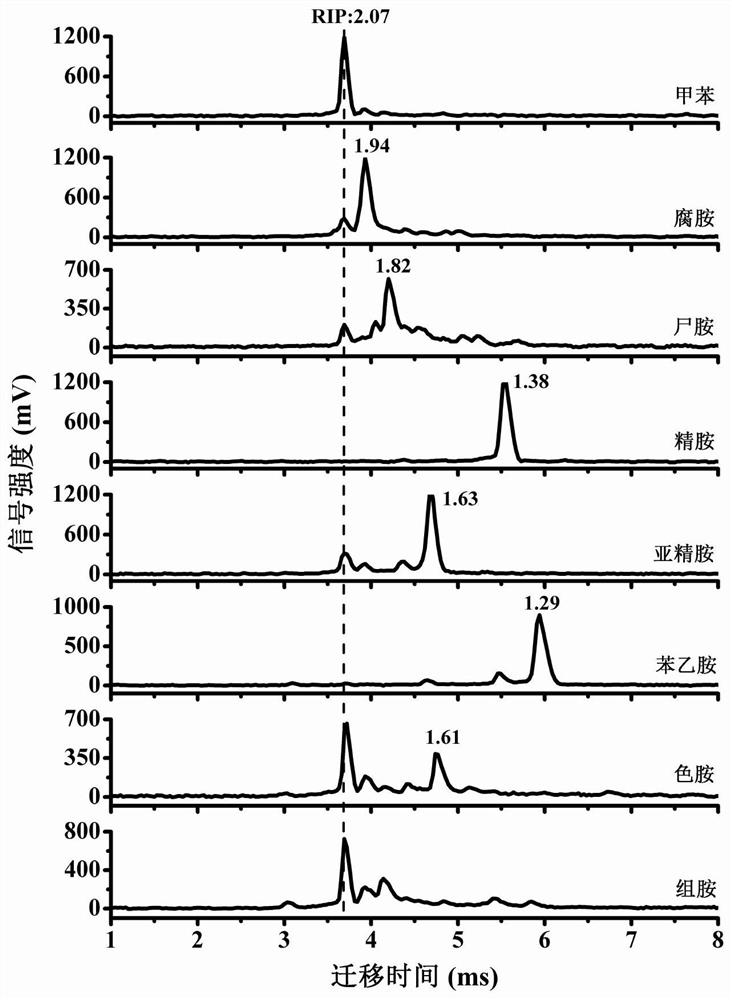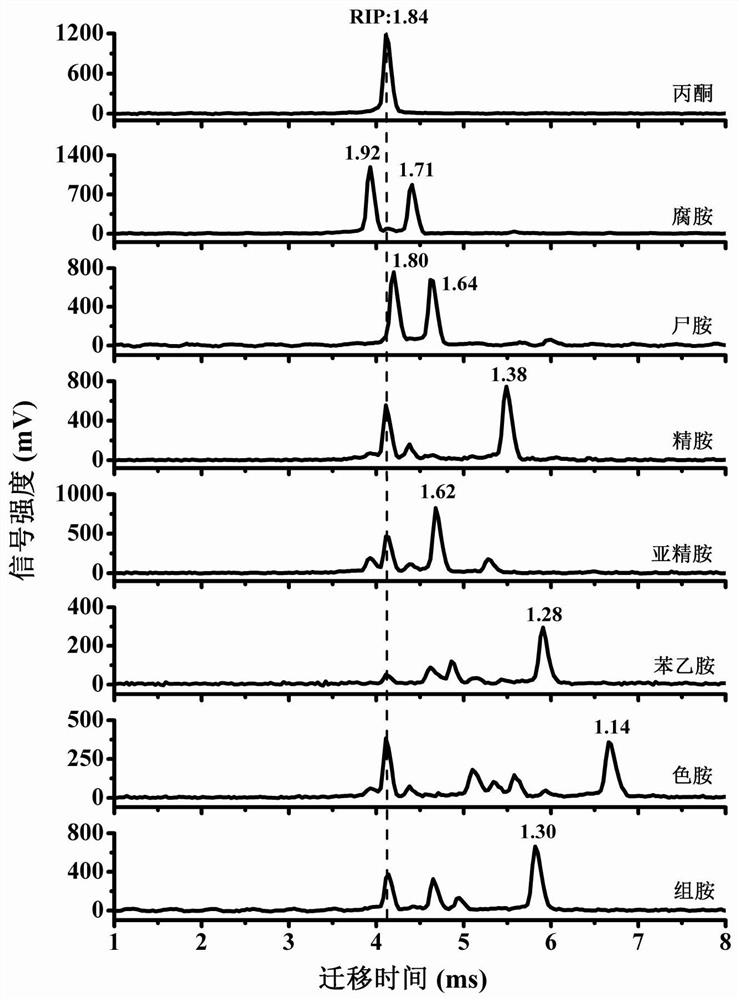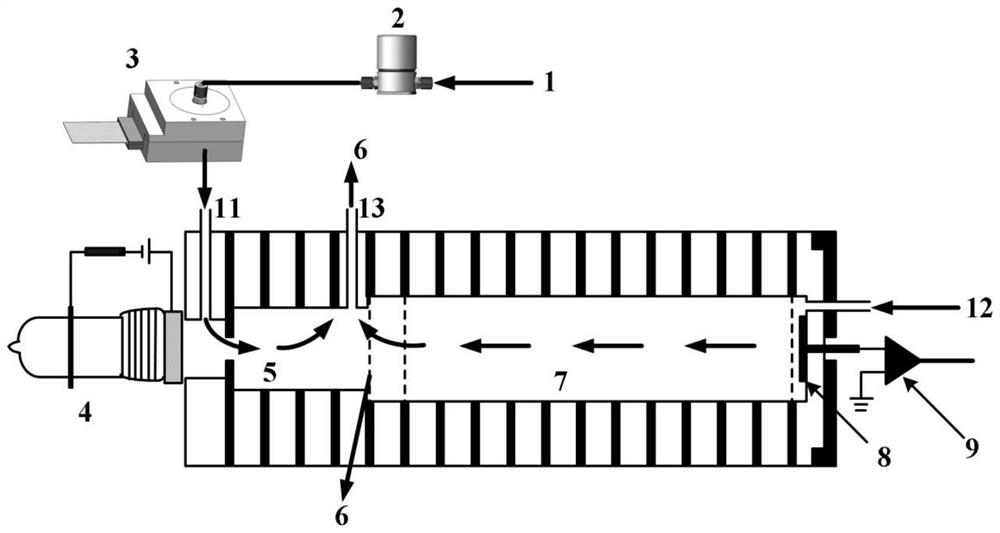Biogenic amine detection method based on time-resolved dynamic thermal desorption ion mobility spectrometry
A technology of ion mobility spectrometry and detection method, applied in the field of biogenic amine detection based on time-resolved dynamic thermal desorption ion mobility spectrometry, to achieve the effect of improving selectivity and sensitivity and fast analysis speed
- Summary
- Abstract
- Description
- Claims
- Application Information
AI Technical Summary
Problems solved by technology
Method used
Image
Examples
Embodiment 1
[0041] In the positive ion mode, toluene is used as the reagent molecule, the thermal desorption temperature is 120°C, the transfer tube temperature is 100°C, the carrier gas flow rate is 200mL / min, the drift gas flow rate is 300mL / min, and the voltage difference between the two metal rings is 178V, the electric field distribution on the transfer tube is 250V / cm, and the ion mobility spectra of putrescine, cadaverine, spermine, spermidine, phenylethylamine and histamine with different reduced mobility are respectively obtained, as shown in figure 1As shown, it can be seen from the figure that toluene mainly forms a reduced mobility of 2.07cm 2 V -1 the s -1 The reagent ion of the reagent, the reagent ion reacts with the seven biogenic amines to form corresponding characteristic product ions respectively. Among them, the reduced mobility of putrescine formation is 1.94cm 2 V -1 the s -1 The product ion of cadaverine formation reduced mobility 1.82cm 2 V -1 the s -1 The ...
Embodiment 2
[0043] In the positive ion mode, acetone is used as the reagent molecule, the thermal desorption temperature is 120°C, the transfer tube temperature is 120°C, the carrier gas flow rate is 200mL / min, the drift gas flow rate is 300mL / min, and the voltage difference between the two metal rings is 178V, the electric field distribution on the transfer tube is 250V / cm, and the ion mobility spectra of putrescine, cadaverine, spermine, spermidine, phenylethylamine and histamine with different reduced mobility are respectively obtained, as shown in figure 2 As shown, it can be seen from the figure that acetone mainly forms a reduced mobility of 1.84cm 2 V -1 the s -1 The reagent ion of the reagent, the reagent ion reacts with the seven biogenic amines to form corresponding characteristic product ions respectively. Among them, the reduced mobility of putrescine formation is 1.94cm 2 V -1 the s -1 and 1.71cm 2 V -1 the s -1 Two product ions; cadaverine formation reduced mobility...
PUM
 Login to View More
Login to View More Abstract
Description
Claims
Application Information
 Login to View More
Login to View More - R&D
- Intellectual Property
- Life Sciences
- Materials
- Tech Scout
- Unparalleled Data Quality
- Higher Quality Content
- 60% Fewer Hallucinations
Browse by: Latest US Patents, China's latest patents, Technical Efficacy Thesaurus, Application Domain, Technology Topic, Popular Technical Reports.
© 2025 PatSnap. All rights reserved.Legal|Privacy policy|Modern Slavery Act Transparency Statement|Sitemap|About US| Contact US: help@patsnap.com



